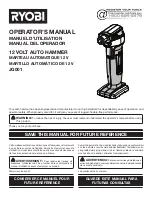
SWITCHING POWER SUPPLIES AND RF NOISE
1.
Switched mode power supplies ( SMPS ) employ high frequency
switching and thus, are a source of radio interference, a recipient of radio
interference and a conduit of radio interference. ( Older linear type trans-
former based power supplies do not employ high frequency switching volt-
ages and will be quieter as compared to switching type of supplies ).
2.
The primary emission sources originate in the switching devices due
to their fast switching current transitions: harmonics of the switching fre-
quency and broadband noise created by under-damped oscillations in the
switching circuit. The secondary source is from the bridge rectifier, both rec-
tifier noise and diode recovery. The AC input rectifier / capacitor front end of
the switching power supplies ( excepting those with power factor correction )
are notorious for generating power supply harmonics due to the non linear
input current waveform. The noise is both conducted and radiated through
the input power cord and the DC output wiring to the radio.
3.
Switching power supplies are also recipients of radio interference.
The normal operation of the power supply can be disturbed due to RF noise
getting coupled into the power supply. Thus, the power supply may generate
excessive RF noise and lose output voltage regulation due to excessive
transmitter energy being coupled through the AC / DC lines to the power
supply’s regulator feedback path. This may be due to antenna being too
close or due to the antenna or feed system not radiating properly. First
check the antenna system SWR. Then, if necessary, relocate either the an-
tenna or the power supply farther apart.
4.
The receiver may “hear” the power supply. A slowly moving, slightly
buzzing carrier heard in the receiver may be caused by the antenna being
too close. As with the transmitter related noise pick up, a loose coaxial con-
nector or a broken or a missing ground may aggravate this problem. Nor-
mally these noises will be below the background or “band” noise. Increase
the separation between the power supply and the receiving antenna. Use an
outdoor antenna. This will reduce the amount of signal picked up from the
power supply and also increase the amount of the desired signal.
5.
The conducted and radiated RF noise from these power supplies is
limited by internal filtration. These RF noise currents are filtered and
bypassed to the chassis of the power supply. The chassis is, in turn,
connected to the earth ground pin of the ac input power cord. Thus, the
chassis of the power supply is connected to the earth ground of the 230
VAC distribution system. The net RF noise generated by these power
supplies complies with the limits laid down in the European Standards for
emissions and immunity.
5.






























